Advertisements
Advertisements
प्रश्न
In cyclic quadrilateral ABCD; AD = BC, ∠BAC = 30° and ∠CBD = 70°; find:
- ∠BCD
- ∠BCA
- ∠ABC
- ∠ADC
उत्तर
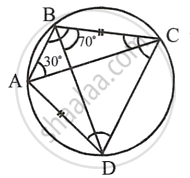
ABCD is a cyclic quadrilateral and AD = BC
∠BAC = 30°, ∠CBD = 70°
∠DAC = ∠CBD ...[Angles in the same segment]
`=>` ∠DAC = 70° ...[∵ CBD = 70°]
`=>` ∠BAD = ∠BAC + ∠DAC = 30° + 70° = 100°
Since the sum of opposite angles of cyclic quadrilateral is supplementary
∠BAD + ∠BCD =180°
`=>` 100°+ ∠BCD = 180° ...[From (1)]
`=>` ∠BCD = 180° – 100° = 80°
Since, AD = BC, ∠ACD = ∠BDC ...[Equal chords subtends equal angles]
But ∠ACB = ∠ADB ...[Angles in the same segment]
∴ ∠ACD + ∠ACB = ∠BDC + ∠ADB
`=>` ∠BCD = ∠ADC = 80°
But in ∆BCD,
∠CBD + ∠BCD + ∠BDC = 180° ...[Angles af a triangle]
`=>` 70° + 80° + ∠BDC = 180°
`=>` 150° + ∠BDC = 180°
∴ ∠BDC = 180° – 150° = 30°
`=>` ∠ACD = 30° ...[∵ ∠ACD = ∠BDC]
∴ ∠BCA = ∠BCD – ∠ACD = 80° – 30° = 50°
Since the sum of opposite angles of cyclic quadrilateral is supplementary
∠ADC + ∠ABC = 180°
`=>` 80° + ∠ABC = 180°
`=>` ∠ABC = 180° – 80° = 100°
APPEARS IN
संबंधित प्रश्न
In the given figure, O is the centre of the circle. ∠OAB and ∠OCB are 30° and 40° respectively. Find ∠AOC . Show your steps of working.
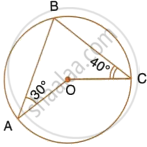
In the given figure, AOC is a diameter and AC is parallel to ED. If ∠CBE = 64°, calculate ∠DEC.
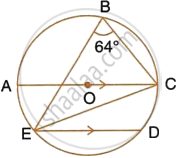
In the given figure, AB = AD = DC = PB and ∠DBC = x°. Determine, in terms of x :
- ∠ABD,
- ∠APB.
Hence or otherwise, prove that AP is parallel to DB.
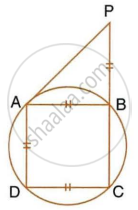
In the figure, given below, CP bisects angle ACB. Show that DP bisects angle ADB.

AB is a diameter of the circle APBR as shown in the figure. APQ and RBQ are straight lines. Find : ∠PBR
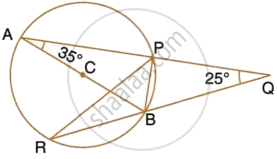
A triangle ABC is inscribed in a circle. The bisectors of angles BAC, ABC and ACB meet the circumcircle of the triangle at points P, Q and R respectively. Prove that :
∠ACB = 2∠APR,

If I is the incentre of triangle ABC and AI when produced meets the cicrumcircle of triangle ABC in points D . if ∠BAC = 66° and ∠ABC = 80°. Calculate : ∠IBC
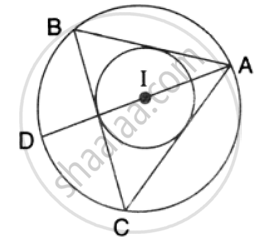
If I is the incentre of triangle ABC and AI when produced meets the cicrumcircle of triangle ABC in points D. f ∠BAC = 66° and ∠ABC = 80°. Calculate : ∠BIC.
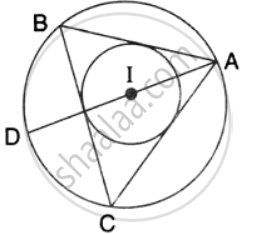
In the given Figure. P is any point on the chord BC of a circle such that AB = AP. Prove that CP = CQ.
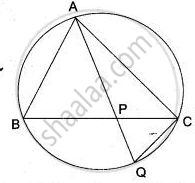
In the given figure (drawn not to scale) chords AD and BC intersect at P, where AB = 9 cm, PB = 3 cm and PD = 2 cm.
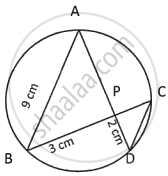
- Prove that ΔAPB ~ ΔCPD.
- Find the length of CD.
- Find area ΔAPB : area ΔCPD.
